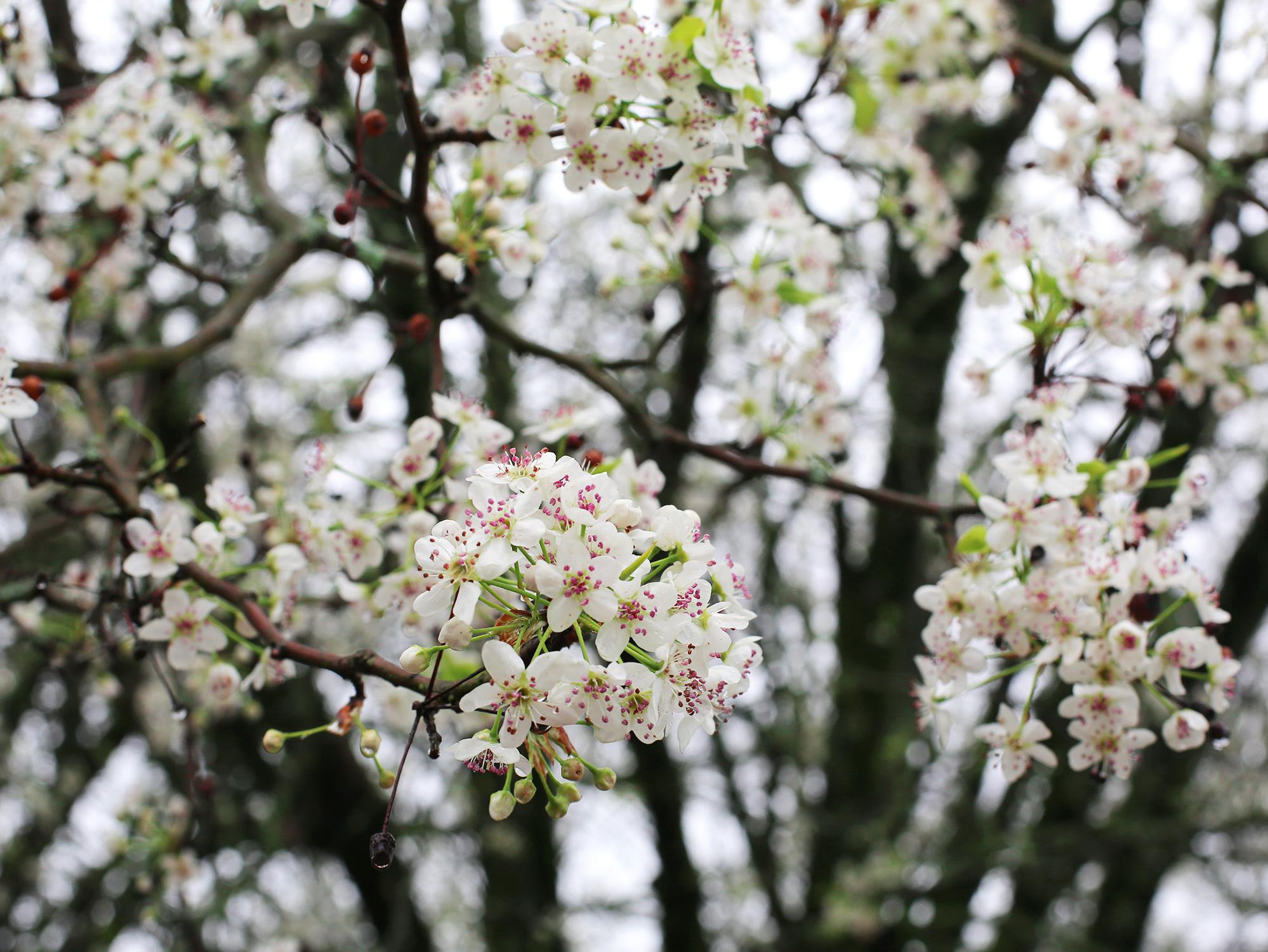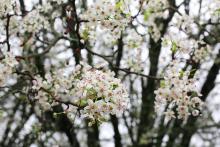Information Possibly Outdated
The information presented on this page was originally released on February 22, 2019. It may not be outdated, but please search our site for more current information. If you plan to quote or reference this information in a publication, please check with the Extension specialist or author before proceeding.
Bradford pear trees offer tortured beauty
STARKVILLE, Miss. -- Under constant, ideal conditions, Bradford pear trees could provide a quarter century of beauty. Unfortunately, the weather will never cooperate to protect these vulnerable ornamental trees for an extended time.
Every spring, there is talk in the news, on blogs and between neighbors about the curse of the Bradford pear. These discussions capitalize on the Bradford pear’s spring blooms -- those magnificent spade-shaped crowns with profuse white blossoms we see in yards and along city streets. Depending on the region of Mississippi, flowering occurs in early to mid-March.
Commentators on the negative aspects of the Bradford pear point out that the tree is a nonnative species brought from East Asia (principally southern China and Vietnam) during the 1960s. The species matures rapidly for a tree, typically not living for more than 25 years.
Although the blossoms are attractive to many, they can have a fairly noxious odor similar to rotting flesh. The smell has evolved over thousands of years to attract insects to the blossoms for pollination.
The main problem with Bradford pear is it has very weak branch connections to the stem of the tree. The tree tends to fork into multiple stems, known as “codominant stems.” These are stems of equal diameter resulting in a weak structure. Codominant stems have included bark where the branches do not adequately fuse to the main stem.
Consequently, when there is ice or wind, the tree twists (known as torsion), which separates those weakly fused branches from the stems. That’s why we often see Bradford pears with broken limbs.
Bradford pear should not be planted in the first place. However, if it is already planted, don’t remove it until it is a significant risk to health or property. Some commentators claim pear cultivars work somewhat better. However, the cultivars still tend to have branch unions that separate rather easily during wind and ice storms.
Perhaps the best solution to the problems caused by Bradford pear is to select a different species. Consider native trees that have evolved in Mississippi’s climate and soils. There are a number of native ornamentals that have similar showy blossoms, shape and size -- all characteristics that make Bradford pear appealing. Some of these include buckeye, redbud, serviceberry, various magnolias and various dogwoods.

Editor’s Note: Extension Outdoors is a column authored by several different experts in the Mississippi State University Extension Service.








